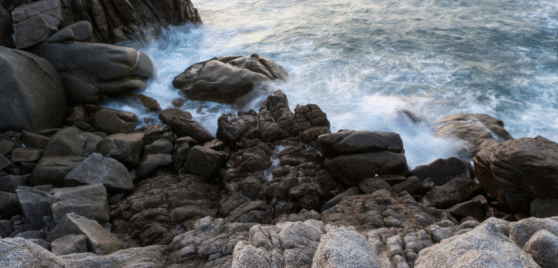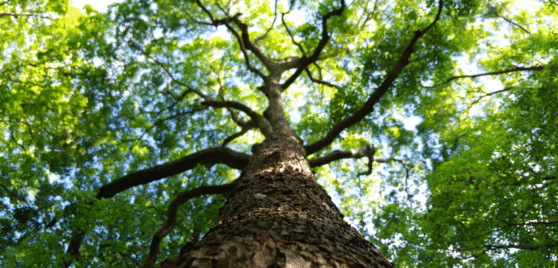LISTEN
READ
In this podcast, IML small-mid cap portfolio manager, Marc Whittaker, chats to Carl McMinn about a very eventful September quarter, with a special focus on IML’s small-mid cap funds, healthcare and IML’s approach to the resources sector.
Follow our podcast, ‘Navigating the Noise’ on Spotify, Apple or Amazon to be notified of new episodes.
 |
 |
 |
Lightly edited transcript – Recorded on 4 October
Carl McMinn: Hello and welcome to Navigating the Noise, a podcast by Natixis Investment Managers Australia, where we bring you insights from our global collective of experts to help you make better investment decisions. I’m Carl McMinn, Distribution Director at Natixis, and today I’m joined by Marc Whittaker from IML. Marc is a small and midcap specialist and is co-PM on IML’s Future Leader Fund and the private portfolio fund. Marc is passionate about his small-cap stocks and loves to talk about all the factors that make a successful small-cap business. Excited to hear what he has to say about the September quarter, what drove markets and how IML’s portfolios fared, as well as Marc’s view on what lies ahead. Marc, welcome to the podcast.
Marc Whittaker: Hi there, Carl. How are you? Thanks for having me on the podcast.
Carl McMinn: Pleasure. Marc, September, always a fun time with reporting season, but overall a bit of a strong but volatile quarter. The small ords up 6.5% and the X50 ASX up 7.2%. Tell us what’s been driving the small and midcap markets over the last three months.
Marc Whittaker: Yes. You’re right, Carl. It was a very strong quarter, wasn’t it? Across the small and midcap indices, it was actually quite an interesting period. Because if you remember back to early August, we had the whole disruption around the increase in interest rates on the Japanese central bank and fears that the carry trade across Japan and the developed markets would come to an end and there was quite a drawdown or decline in markets, and that was quite a volatile period as you said. But post that, we’ve had obviously the US Federal Reserve cutting rates, we’ve had New Zealand cutting rates, and clearly, we’ve had China’s announced stimulus, which has been probably larger and stronger than expected.
That’s really put another tailwind on the markets. And so that strength that we’ve seen in that September quarter is really on the back of those developments. That’s really, again, turbocharged small cap and midcap markets, particularly here in Australia, where resources have been particularly strong. Reporting season, to be fair, a lot better than expected, or better than feared, might be the right way to put it. We had a nice bounce in retailers. I know Simon talked to the reporting season previously, but all those factors coming together to drive a very strong performance in markets across that quarter.
Carl McMinn: I see healthcare has been on a bit of a tear. What’s happening there?
Marc Whittaker: Well, small cap and midcap healthcare has been a sector that we’ve been pushing for quite some time. We’ve been overweight that part of the market for a number of years, and really on the thesis that that sector would rebound post COVID and the impasse that COVID posed on the sector in terms of visitations to medical practitioners, whether that’s GPs, whether that was pathology services, whether it was radiology services, whether it was other forms of medical services. What we’re really seeing is a rebound or a recovery in that sector, and that’s really driven the strength in that part of the market.
We had a number of companies report in reporting season, where they highlighted that margins were improving, the cost growth was moderating, volumes were growing, and we’ve really seen the operating leverage that is inherent in a lot of healthcare businesses start to come to the fore again. It’s really given the market confidence to buy these companies again, because the market’s now confident that, I guess, the hurdles or the roadblocks that COVID imposed on the sector have started to clear.
Even in aged care, we’ve seen a very dramatic recovery in the prospects for that sector as well, given better government funding, occupancy rates in aged care homes improving as well on the back of, again, a recovery out of COVID. Just a return to the mean almost, in a way, for that part of the sector, and really driving what was a very cheap looking sector, because the market was shunning those sorts of names, given the impulse from COVID. Now that those headwinds are dissipating, the road is a lot clearer looking forward, the market’s been happy to buy those names again.
Carl McMinn: Great, must have helped the portfolios over the quarter. How did the small cap funds fare at IML?
Marc Whittaker: We were plus or minus a little bit in terms of our performance relative to the index, but as I say, given the strong performance in resources, which we saw over that quarter on the back of that China stimulus, I think that was a pretty fair performance from our funds, to be fair with our listeners.
Healthcare delivering as some of the other key names that we own in the portfolios really delivering well, and really pleasing to see, because a lot of these loans that we hold, we do hold them over a longer-term horizon, and so we’re really backing the ability of management and these companies to turn their performances around, and the fact that we’re looking for companies with a competitive advantage, companies that can grow, companies that have a management team that can help propel these companies along.
Pleasing to see, a good performance for the quarter. As I say, a little bit ahead or a little bit behind, depending on which fund we’re talking about, but given the strength of the markets in that September quarter, I think it was a very good effort on the part of IML’s small and midcap funds.
Carl McMinn: Yeah, so definitely a backend rally for the miners. What have you got in that area? What are your holdings amongst the resources?
Marc Whittaker: There’s not a lot of ways to play iron ore in small and midcaps, but where we can play is things like copper and lithium, where we have a couple of small holdings. We’re certainly nowhere near index weight in resources, so we’re very selective in terms of what we do own in those particular parts of the market, but we tend to play resources in a different way.
You hear about the picks-and-shovels approach to resources. We own ALQ, for example, which is a sample testing business. If you’re a gold company and you want to test your assays around your gold mine, you may send ALS (or ALQ, which is the ticker) a sample of your mining production to test for gold and I guess the intensity of gold in the sample, for example. That’s the way we tend to play it.
We’ve got Imdex, which is a drilling technology company, which is a high exposure to gold mining and other forms of mining as well. Owning the picks and shovels, as opposed to the miners themselves. Given the volatility that you do see in commodity prices, the volatility you do see in production profiles for a lot of the mining companies, we think it is a better way, a less volatile way of playing the sector. If the sector does well and volumes are growing, then these picks-and-shovel type players will benefit from those increased volumes as well.
Carl McMinn: Right. You’ll still participate, but the preference is on that services and the picks-and-shovel side. Our favorite topic, we’ll move on to the standout companies over the quarter. Who are your favorites?
Marc Whittaker: Well, I do cover the small and midcap healthcare names at IML here, so given that sector was particularly strong for us over the quarter, clearly and unsurprisingly, I’ve got a couple of names in that space which did particularly well.
Two stand out to me in particular, Australian Clinical Labs, or ACL, which I think I’ve bored people to death over the last two or three years talking about this company. It’s finally come good. ACL is basically the third-largest pathology player in the country, it’s under the stewardship of Melinda McGrath, who I think is an excellent CEO. But really, why I really liked ACL was because, over time, they’ve invested in what we would call a laboratory information system, which really, the crux of that investment has allowed them to ramp up their cost base in response to volume.
When volumes are increasing, they’ve been able to add additional resources and earn a good margin on those additional resources, and when volumes have fallen, they’ve been able to pull back on their cost base to protect their margins. When we had COVID and we had this massive ramp up in volume, in pathology testing volumes, the company was really able to meet that increase in demand for their services and really benefit from that, and then post-COVID, as we’ve seen the COVID volumes come out and business as usual, volumes have taken longer to come back to normal, because people have shied away from visiting the doctor. But as those volumes fell, the company was able to ramp down its cost base and protect its margins as best they could in that lower-demand environment.
What was really a bugbear for us for a long period of time was people would compare ACL to Healius, for example. Now, Helius is the second-largest pathology player in the country, but Healius hasn’t made that investment in a laboratory information system. For a long period of time, Helius has been reporting very low margins to the market. Operating margins of 3-4% on the back of pathology volumes that have been quite volatile and erratic, moving up and down from period to period. What we saw at that second half result back in August was that, in comparison to Healius, ACL reported operating margins of almost 10 to 11%, so getting back to the margins that they told the market that they could be generating over time, back when they first listed back in 2021. All of a sudden, the market’s realised that the story that ACL has been talking to actually has legs.
The stock’s a lot closer to $4 now, it’s been a very good performer for us, it was one of our largest weights, and we still think it looks okay here. It still looks pretty good value, it’s still a very material weight in our portfolios and we’re very happy to hold it at this stage still, which is good.
You asked me about a second one, Carl. I would say Regis Healthcare, which is one of the largest aged care providers in the country now. If everyone will recall that the Royal Commission into Aged Care going back a couple of years ago was quite negative for the industry, it did paint a pretty negative picture on the industry as a whole. But in our view, Regis was one of the best quality operators in the industry. They were profitable at a time when a lot of the industry was losing money.
So at the depths of the industry, when COVID was at its height and people weren’t putting their loved ones into aged care because they were scared about the potential for COVID to impact on their loved ones in the aged care system. Occupancy rates were driven really low, and like any health care business, aged care is all about utilisation and occupancy. We had government funding, which was lagging costs, so inflation was high, the demand for registered nurses and aged carers was very high, so the cost to employ labour was going up, but the funding from the government into the sector was actually well below the rates of inflation and cost inflation as well. That started to change. We obviously had the Royal Commission, we had a bipartisan approach to the sector now from both the Labor Government and the Coalition Government that this funding into the sector had to improve.
We’ve had a couple of announcements in more recent times about the proposed funding to come into the sector and the economic viability of the sector and the fact that participants in the sector do need to make money. Yes, they need to provide a service and a quality service to the people who are in the system. That’s very important and the sector understands that, but that service provision needs to be funded in some way by government, so that the services are at the level required, and we’re starting to see that now.
Regis has been a very good performer for us more recently, particularly over that September quarter, we’ve seen a very strong price performance there. As the markets realise that the sector’s improved, it’s back on two feet, and so as the baby boomer generation moves into their eighties and the average age of entry into an aged care home is in your low to mid-eighties, as that boomer generation moves into that age demographic, the demand for aged care beds is going to – I don’t want to use the word “explode” it might be a little bit too emotional – but it’s certainly going to be a very strong demand for aged care beds, and Regis is very well-positioned. So that’s been a very good performer for us. Good management team, well-positioned, good quality homes, a big fan of that particular stock as well.
Carl McMinn: Awesome. Well, maybe looking at the other side of the coin, any that’s disappointed? Any companies that have disappointed over the last quarter, and how’s your view changed on those stocks?
Marc Whittaker: Unfortunately, Carl, we always get one or two that disappoint, so not everything works out in our favor. I think the key thing to point out here is that where you do own a particular stock or company, where it does disappoint, you have very clear reasons for why you own the company, you have very clear understanding of why you own it, what the fundamentals are and what you think that company’s worth. And if there is a disappointment, is it a short-term disappointment? Is it a more structural issue? If the answer is it’s short-term, there’s been an issue that the market’s taken exception to and have sold the company down… because what we do know, in small caps in particular, is that, when the company disappoints, the market can throw the toys out the cot a little bit and really punish a company in terms of its share price unfairly often.
In the case of Kelsian, which is basically a bus and public transport provider and operator that we own across our small and midcap funds, that had a disappointing update at its full-year result back in August. Really, where the disappointment was, funnily enough, was on its capex side. The earnings are actually quite strong, it reported a very good revenue performance. It’s made an acquisition or two in the more recent past, which helped with that growth, but really, what disappointed the market was that they came out with a revised capex number, which was about $100 million higher than where they’d previously got at the market, and in the context of Kelsian, that’s quite a large number.
The market’s got question marks about, “Well, how capital-intensive is this business? We really thought this was a relatively capital-light business, but what you’re telling us that you’re spending more money?” And we have a question mark over the return that you’re going to make on that particular spend or capex over the near to medium term. The company was a disappointing performer for us across September, but where we think they need to improve is really communicating to the market. Just where they need to spend the money, how much money they need, and where that’s going and the return on that money. We think that’s an issue that they can easily address, given it disappointed on that side and was sold down aggressively, and we’ve been adding to it, Carl. It’s a position we like.
Carl McMinn: We mentioned there was lots of volatility over the quarter, a couple of pretty sharp drops. Did the team get the opportunity to add some new companies to the portfolio or top up some existing stocks?
Marc Whittaker: Yeah, well, clearly Kelsian is… well, I just mentioned we added to that one. ALQ, which I talked about in our mining review at the top of the podcast is one that we liked, we added to that a little bit more on its result, because it was a little bit soft on the back of its result, so we took that to a higher weight. We liked that business, we think it’s got great market positioning, competitive advantage, and growth outlook is very good. Then, even in the small cap space in particular, the likes of Hansen in the IT services space, we did add to that position. And then Lifestyle Communities, which is a land lease company in the small cap part of the market, we did initiate a small position there. It’s been under pressure a little bit, given some headlines in the press about its business model, and we’ve spent a lot of time looking that one. We’ve got some comfort around how it does this business and how it works, and we’ve started to nibble away at that one a little bit, so it’s a small position at this stage, but very good land bank, very good asset backing behind that one, so there’s a very strong valuation argument in that particular name as well.
Carl McMinn: Great. To close out, Marc, IPOs are probably starved at the moment, but is there anything on the horizon, and how do you see the rest of 2024 and into 2025 going?
Marc Whittaker: Yeah, so IPOs are an interesting one. As you say, it’s been a bit of a drought when it comes to IPOs. There’s a handful coming towards the end of the year, if the timeline proves itself, and there’s one or two that look potentially quite interesting, so we’ll definitely have a look at those and weigh up the investment case for each of those.
But I suspect there’s probably a wave of IPOs coming at some point into calendar 2025. We’ve seen some pretty significant capital raises more recently, whether that was Auckland Airports or Fletcher Building out of New Zealand, which are two companies which are both listed over here as well and are in the small cap index. I think there’s an appetite for fund managers to look at new ideas and put money to work, and I think there’s a number of IPOs out there waiting to come to market. I think next year will be a much better year for IPOs, which will be good. It’ll be great to look at new ideas, but having said that, there’s still lots of great ideas that are listed on the market at the moment as well, so we’re finding new ideas all the time.
As I say, some of our healthcare names have been very strong, so we have been trimming some of those into that strength, and that gives us an opportunity to put that money to work in other ideas, whether that’s existing holdings or new ideas. I think in terms of the market outlook more generally, you mentioned volatility at the top of the show, and I think that’s likely to be the case. I mean, markets are always volatile, given where geopolitics is at the moment. I guess the muted growth outlook for the Australian economy as well, there’s a mix of different factors at play. We’ve obviously got rate cuts more likely to continue offshore, probably less likely here in the short to medium term, so there’s a couple of different currents running into each other at the same time.
But I think, at the end of the day, you’ve just got to stick to fundamentals. That served us really well in that healthcare part of the market, as we spoke about it, and I think that will continue to hold us really well or serve us really well throughout the holdings in our portfolio. If you just focus on fundamentals, focus on what you own and why you own it, and have a strong view and discipline around valuation, then I think that bodes and holds you in really good stead when markets get a little bit choppy. Quality at a reasonable price, we preach that mantra, and I think that’s certainly the way to approach the market. The future’s always unknown, but if you just stay true to your knitting and persevere with that approach, I think that’s going to hold the profiles in really good stead.
Carl McMinn: Well, thanks for joining me today, Marc. As always, we appreciate your vast knowledge and enthusiasm for all things small and midcaps. And, of course, to all our listeners, if you enjoyed the episode, please click follow on your favorite podcast platform or on the bell icon to be notified of future episodes. Tune in again to hear more from our global collective of experts. Thanks very much.
Disclaimer:
This podcast has been prepared and distributed by Natixis Investment Managers Australia Proprietary Limited, ABN 60 088 786 289, AFSL 246830 and includes information provided by third parties, including Investors Mutual Limited (“IML”) AFSL 229988, the responsible entity and investment manager for the IML Funds.
Although Natixis Investment Managers Australia believes that the material in this podcast is correct, no warranty of accuracy, reliability, or completeness is given, including for information provided by third parties except for liability under statute which cannot be excluded. This material is not personal advice. The material is for general information only and does not take into account your personal objectives, financial situation or needs. You should consider and consult with your professional advisor whether the information is suitable for your circumstances. The opinions expressed in the materials are those are the speakers and may not necessarily be those of Natixis Investment Managers Australia or its affiliate investment managers. Before deciding to acquire or continue to hold an investment in a fund, you should consider the information contained in the product disclosure statement in conjunction with the target market determination, TMD, available at www.stg-imlimited-staging.kinsta.cloud.
Past investment performance is not a reliable indicator of future investment performance and no guarantee of performance, return of capital, or a particular rate of return is provided. Any mention of specific company names, securities or asset classes is strictly for informational purposes only and should not be taken as a recommendation to buy, hold, or sell. Any commentary about specific securities is within the context of the investment strategy for the given portfolio. The material may not be reproduced, distributed, or published in whole or in part without the prior written consent of Natixis Investment Managers Australia.
Copyright 2024 Natixis investment Managers Australia. All rights reserved.
INVESTMENT INSIGHTS & PERFORMANCE UPDATES
Subscribe to receive IML’s regular performance updates, invitations to webinars as well as regular insights from IML’s investment team, featured in the Natixis Investment Managers Expert Collective newsletter.
IML marketing in Australia is distributed by Natixis Investment Managers, a related entity. Your subscriber details are being collected by Natixis Investment Managers Australia, on behalf of IML. Please refer to our Privacy Policy. Natixis Investment Managers Australia Pty Limited (ABN 60 088 786 289) (AFSL No. 246830) is authorised to provide financial services to wholesale clients and to provide only general financial product advice to retail clients.






